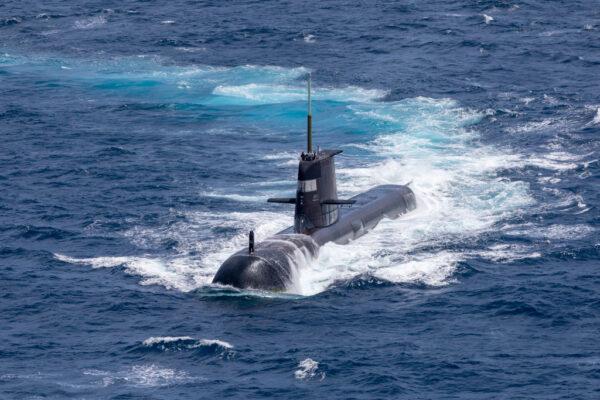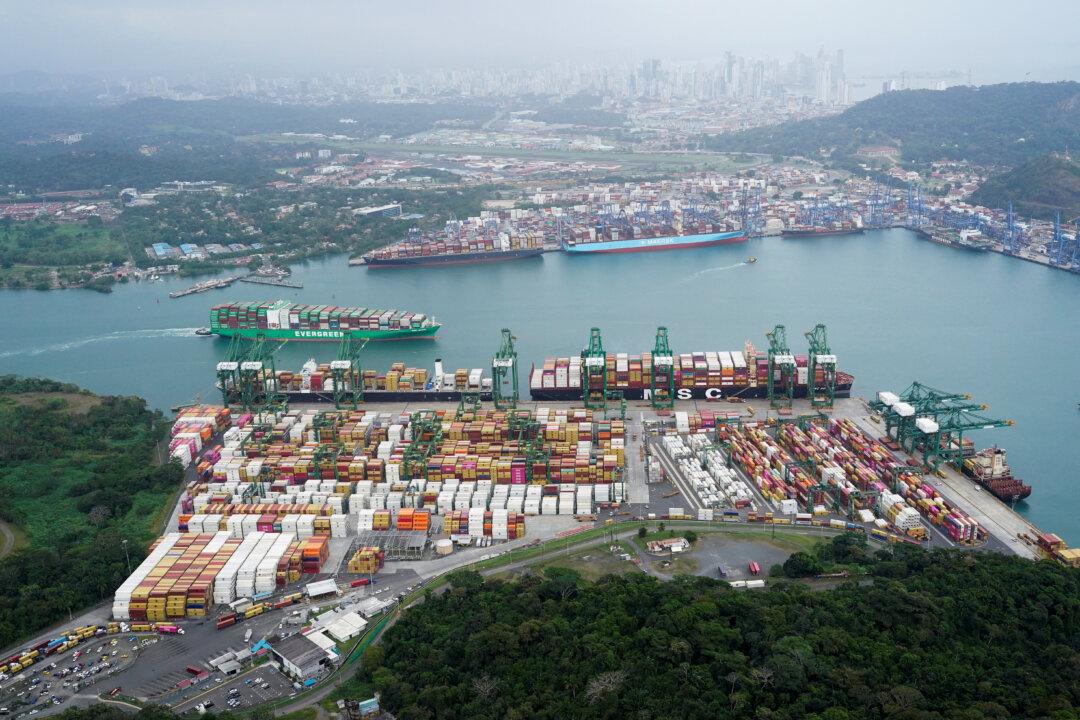The “post-China” global strategic architecture will gain clarity during 2023.
AUKUS, the Australia-United Kingdom-United States security pact, will be articulated further during March 2023. And AUKUS is not just about providing nuclear propulsion technology for the next Australian submarine, as significant a project as that might be.
Even politicians in the three countries—along with their counterparts elsewhere—could be forgiven for thinking that AUKUS is “all about submarines.” Indeed, it was Australia’s submarine procurement crisis of recent years that began the process of creating AUKUS, potentially the most significant strategic alliance of the post-Cold War era.
Once commenced, AUKUS was clearly about creating the potentially most significant global security alliance of the 21st century, giving cohesive military and strategic capabilities in all of the world’s oceans and polar regions. But Australia’s next submarine will be the focus of the announcement on AUKUS by the three heads of state of AUKUS nations—U.S. President Joe Biden, Australian Prime Minister Anthony Albanese, and UK Prime Minister Rishi Sunak—when they meet in Washington in March.
Indeed, the submarine project for Australia represents a major strengthening of Australia’s power projection capabilities into the next strategic era, more than two decades hence, and it fills the gap between the great concentrations of the United States and the United Kingdom. AUKUS was designed, however, not to fill the submarine portion of that global maritime linkage, but to provide a comprehensive security understanding involving political as well as military capabilities across the spectrum of air, land, sea, and space, utilizing a trusted matrix of technologically compatible powers.
But the lack of clarity as to the global strategic nature of AUKUS is significant. It supersedes regional organizations, such as the North Atlantic Treaty Organization. Still, neither Whitehall nor Washington wants to abandon the Continental European allies, even though older NATO allies have allowed NATO to disintegrate.
Much of the problem of “letting go of NATO” entails the reality that old warriors want to fight the last war and not the next one, and, indeed, “old Cold Warriors” never really stopped fighting the Cold War.

But to restate the obvious: the NATO of 2023 is not the NATO of 1989. Through the Cold War, NATO developed a set of military capabilities to resist the Soviet-led Warsaw Treaty Organization (WTO), which created unparalleled efficiencies that allowed NATO military forces to act as a unified, well-supplied, and highly-flexible force.
That NATO capability was allowed to disintegrate following the collapse of the USSR in 1990–91, as then-U.S. President George H. W. Bush urged a relaxation to “spend the peace dividend.” With that, all discipline and all legal purpose evaporated for NATO and was never reclaimed, despite the later attempts of rent-seekers to use the prestige of “the old NATO” to reclaim a place on the political stage.
Even so, the United States and the UK have the particular task of creating AUKUS as the emerging global alliance without letting down the Atlanticists of NATO. None of the AUKUS members can afford to see the already deepening European strategic vacuum worsen, but neither can any of the AUKUS members save the European Union (EU) from its own increasingly self-defeating policies that resulted in the strategic paralysis evident today. As a result, NATO has attempted to insert itself into the AUKUS world by claiming an “out of area” mission, as stated in the new and important—unofficial—document, “Implementing NATO’s Strategic Concept on China,” issued by the Atlantic Council on Feb. 2.
The key challenge now for Washington, Canberra, and Whitehall is to integrate NATO’s efforts with those of AUKUS, but neither to confuse the two nor to take away capabilities from either body. AUKUS is, at present, a clean slate; NATO is a disintegrated ruin that must be cleaned out and repurposed. Australia, although not a NATO member, has long had a senior coordinating position in NATO headquarters at the ambassadorial level and was represented at key NATO meetings at the head-of-government level.
So how will AUKUS now proceed?
The new Australian nuclear attack submarine (SSN) will not be available for two, or possibly even three, decades, significantly after the life-extension revival of the Royal Australian Navy’s six Collins-class conventional submarines (SSKs) has expired. Australia, then, faces another “submarine gap,” even more dangerous than the brief capability gap created when the old RAN Oberon-class boats left service in the 1990s, and before the Collins-class could effectively provide comprehensive maritime coverage.

The new Australian “submarine gap” probably will be filled by the repositioning or rotation of Royal Navy Astute-class SSNs and U.S. Navy Virginia-class SSNs to HMAS Stirling, the “stone frigate” (naval base) near Fremantle, on the Indian Ocean. Stirling is the RAN’s principal submarine base, has nearby submarine repair facilities, training facilities, and the like, and has recently seen nuclear submarine visits. Royal Australian Navy personnel are already at sea aboard RN Astutes and USN Virginias.
Australia will not buy either type for its own requirement, nor would it build either class under license. It must acquire a vessel that would be state-of-the-art in 2045 or 2050, so it must be a new design. Significantly, it requires an SSN, which would, in some ways, be a compromise with its existing SSK conventional fleet, in terms of (small) size, so that the boats could traverse the shallow Southeast Asian straits without detection.
That means a vessel that would be smaller than the UK’s Astute. The Royal Navy is presently developing its next-generation SSN to follow the Astute-class. The United States continues to build evolutions of the Virginia-class and is also considering a follow-on class. However, the U.S. boats will be too big for the RAN and Indo-Pacific regional waters, where the USN already relies on the RAN’s shallow-water capabilities to perform specific missions. Moreover, the RAN is manpower-challenged in ways the United States and the UK are not, so a small crew is part of the RAN’s consideration. The Astutes run with a crew of 98; the Virginias with a crew of 130; the RAN Collins SSKs with 58.
With this A$100 billion ($70 billion) project, the RAN is seeking a patrol submarine with global patrol range and significant offensive capabilities, but without necessarily the payload, vertical launch missiles (it would use tube-launched missiles and torpedoes) of the Virginias. Such a capability would give Australia an unmatched capability to handle blue water and Asian waters with a strategic reach it presently lacks.
The capability could well be introduced after the threat from communist China has peaked and possibly disappeared, so the capability could take it into a “post-China” era, significantly—and as-yet unexplored—involving balancing capabilities in the Indo-Pacific (particularly up into the Persian Gulf and the Red Sea regions) with India and Indonesia. India already has an SSN capability but is not yet gearing for the next-generation SSN capabilities that the UK, United States, and Australia are contemplating.
AUKUS raised the question—now addressed—of the transfer of U.S. nuclear propulsion technologies to Australia. However, Australia, the UK, and the United States have long shared submarine technologies and capabilities (quite apart from propulsion systems). This, in many ways, has been as sensitive and significant as the three nations’ involvement in the Five Eyes (UKUSA Accords) intelligence exchange treaty and resulted in major improvements to Australia’s Collins-class SSKs, which were built in Australia.
The SSN projects dominating the AUKUS budgets so profoundly are only a small component of the threat spectrum the members are facing. The integrated threats in the cyber, space, hypersonics, and infrastructure arenas are matched by profound Chinese political and amorphous warfare capabilities (which are still inadequately addressed by the three AUKUS powers).
Bottom line, for the moment and on the submarine topic: The new RAN SSN, which has been evolving from the initial understandings achieved to form AUKUS in September 2021, is likely to be a unique hull with considerable compatibility with the post-Astute and post-Virginia SSNs.
All may well benefit from the creation of a more compact SSN capability. And it is probably too soon to say, but the RN itself may consider having a more nimble—and possibly cheaper—fleet of SSNs than its present Astutes when replacement time comes.





